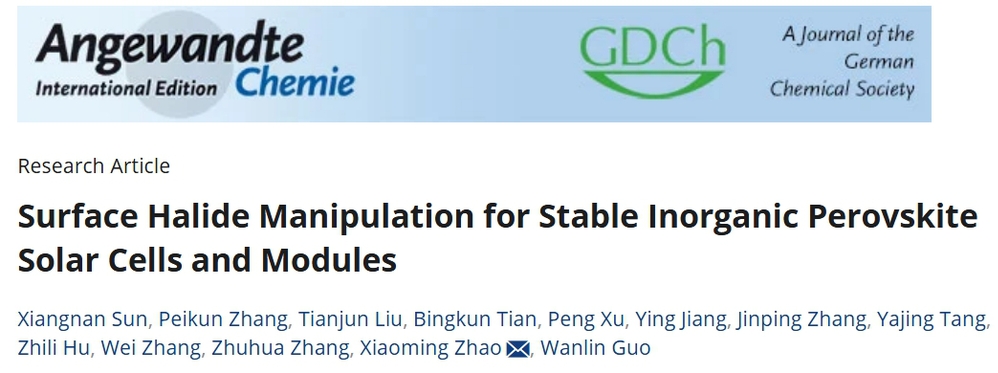Xiangnan Sun, Peikun Zhang, Tianjun Liu, Bingkun Tian, Peng Xu, Ying Jiang, Jinping Zhang,
Yajing Tang, Zhili Hu, Wei Zhang, Zhuhua Zhang, Xiaoming Zhao*, Wanlin Guo
Angew. Chem. Int. Ed.(IF:16.6),First published: 16 April 2025
Iodine-rich inorganic perovskites possessing desirable bandgaps as well as high thermal and chemical stability are facing serious issues of low polymorphic stability, while chlorine-rich inorganic perovskites hold outstanding thermodynamic stability but suffer from low efficiency. Here, we develop function-gradient inorganic perovskites adopting a surface halide substitution strategy, where a stable chlorine-rich skin protects efficient iodine-rich layers, incorporating high stability of chlorine-rich perovskites with high efficiency of iodine-rich perovskites. This strategy simultaneously passivates surface defects and stabilizes the photoactive polymorphs of perovskite, leading to a power conversion efficiency of 21.2% for unit cells (0.16 cm2) and 19.2% for solar modules (23.9 cm2). Notably, the compositional gradient mitigates light-induced ion migration and enhances resistance to environmental erosion. Thus, our devices exhibit negligible efficiency loss after 1000-hour storage in air and 3200-hour operation under continuous 1-sun illumination at 40 °C, representing the most stable wide-bandgap perovskite solar cells reported to date.

DOI:https://doi.org/10.1002/anie.202501164
--校内链接--
--校外链接--

微信公众号